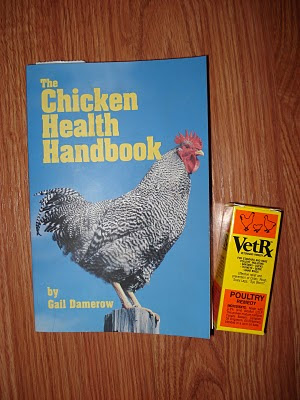
(one of our new Blue Laced Red Wyandottes - picture doesn't do her justice)
Sorry I've been MIA lately. I caught some nasty virus which put me down for quite awhile. I even had to take off 4 days of work. That's a rarity. Fortunately I'm feeling much better, and except for a bit of a lingering cough, feel back to my normal self.
Yesterday we added to our flock of chickens, taking our grand total up to 28! And what a variety we have. The funny thing about all this is that it was my husband, of all people, that initiated this addition. Why is that funny, you might ask? Well, two falls ago, when we first got our chickens (initiated by me) he about had a heart attack when I brought home our initial 12 chickens. I got the lecture of, "I thought you only wanted 3 or 4!?" It wasn't long after that that we picked up 3 or 4 more hens to get us through the winter egg-wise. It wasn't a very prosperous fist winter. If we got one egg a day, we were lucky. In the chickens defense, it was cold and snowy, and they were still pretty young. My husband didn't see it that way. He wanted eggs.

(new Blue Cochin)
Once spring came, half our hens went broody. It was our landlord (we have amazing landlords) that told us to 'let'em set'. So we did. We had 3 hens setting on a menagerie of eggs in the spring. We had no idea what would hatch out as we have always went with a variety of hens and had a Americauna and a Silkie rooster. It was our Silkie hen that first went broody followed by the others. By late spring we had chicks scurrying all over the farm. We also had the addition of a 4 hand raised chicks that came in the mail: 2 Easter Eggers (they lay green eggs) and 2 chocolate egg layers (no people, not REAL chocolate - but wouldn't that be nice?)

(some of the new silkie hens - one might be a rooster)
I prefer to let the mamma hens raise the young. There are many benefits. One: you don't have the mess or stink in your house, and boy can they be messy! Two: you don't have the increase in your electric bill from running the heat lamps and lights all the time. Three: the chicks get inoculated with the naturally occurring good bacteria in their gut and are less likely to grow the bad ones that we worry about making us sick. Four: who knows better how to raise those babies than a hen? And she can be a fierce protector of her chicks. I've seen my little silkies take out some of my largest hens if they come too close. And it's amazing to watch the hens teach her chicks how to eat and drink. She will regurgitate a bit of predigested food for them to eat until they have figured it out on their own.

(another pretty little silkie hen)
This doesn't mean that letting the hens raise the chicks doesn't have its downfalls too. I have lost chicks to hawks and other predatory animals, and I have even had one drown in a bucket of water. Raising a straight run also means you have a 50/50 chance of getting roosters. The sad thing to learn about chickens is that too many roosters causes problems in the flock. They fight and they can ..er.. exhaust the hens. Still, for me anyway, the pros out weigh the cons. And I suppose the benefit to the roosters is...you can eat them. Sorry if that offends anyone, but this is the reality. It's not easy, believe me. We cooked one rooster last year and I couldn't eat him. He sure did smell good, but it was the first rooster we'd ever cooked and I was still green to this whole reality. My dog, however, was very grateful. I'll try again this year. Killing is not something we like to do, it's just the way nature works. I can say this: it sure does make you appreciate your food more.

(Blue Laced Red Wyandotte Roo - napping)
It's another rainy day on the farm. Everyone is locked up in the coop and cage for the next couple of days to get acquainted with their new living arrangements. There's been a little bit of bickering, but overall they seem to be integrating well. I can't wait for that sunny day when I can watch them peruse the farm yard looking for goodies. Hopefully I can get some more colorful pictures of them at that time. For now, this was the best I could do.

(another Blue Cochin - aren't they pretty?)
My hope this summer is to hatch out some Silkie, Americauna, and Wyandotte chicks seeing how we have roosters for each. I'm not sure how we'll do it yet. We'll have to do some research to figure out how to separate them long enough to get a clutch. Maybe we'll have to construct a mini coop and run so we can ensure that the right rooster fertilizes the right hens. It's a learning experience. Until then, they will all just free range together.

(another new Blue Laced Red Wyandotte)
So our new additions consist of: 2 Blue Laced Red Wyandotte hens and one roo; 2 Blue Cochins; and six silkie hens (one who might turn out to be a roo). I'm looking forward to watching Chicken TV this summer! =) Hope you are all well.












